Blink of an Eye
How much can one see (or miss) in a blink of an eye ?
This topic arose when my spouse David and I were on a garden walk around our Costa Rican residence. After weeks of misty and windy days typical of the cloud forest mountainside, the sun burst through the clouds, in and out, on this particular morning. The glorious weather drew us out of the house. We were standing on a slope where the photo below was taken, surrounded by moderately tall trees. Unlike temperate gardens often with a profusion of colors, our tropical patch is solid green, from the ground up to the treetops. It is an assisted regenerating forest on former ranch land. At that time of the year, there was not a single speck of color among the green foliage.
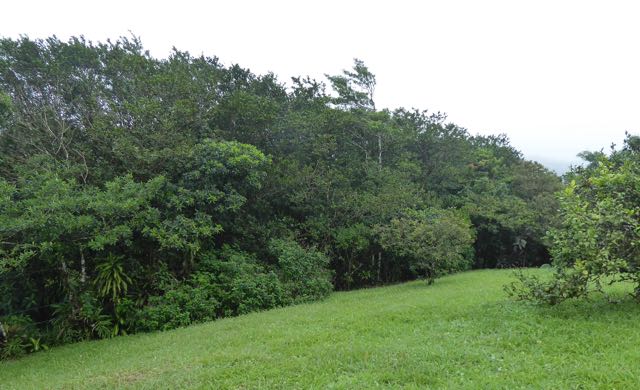
While luxuriating in the soft sun and breeze, we saw a bright orangish-yellow, midsize Sulphur butterfly flying horizontally in straight line at altitude of 10-12 ft high (3m), from right to left in the photo, aligned with a strong breeze and heading toward us. It reached somewhere at the center of photograph, and poof it vanished. At that moment, nothing unusual was moving within view except for that single butterfly.
In retrospect, both of us were synchronously tracking the only bright thing around and were seeing the exact same thing. Or rather, not seeing, the same thing as neither of us saw what happened. We must have both blinked at the precise moment when the butterfly disappeared. Not understanding what occurred, we kept our puzzlement private and continued with our walk.
My own mind was slow to process what happened. Did I really “see” it disappear or did it drop out of the sky? But there was no butterfly on the ground. Was Mother Nature practicing her magic trick? What happened? I scanned the ground again, but unable to find a quick explanation, I puzzled on.
From the corner of my eyes, I saw David loitering around the vicinity (near the small tree on the right edge of the garden photo) where the butterfly disappeared. Five minutes later, I heard him call “Evelyne, come quick. You have to see this”. Camera in hand, I headed for the spot. He pointed to a small tree. I followed his finger tip but saw only shiny, green leaves. No flowers, no buds, totally unexceptional. “What should I be seeing?” I queried. “Step back and look again”. Three steps backward and sure enough, the significance popped into view. Not all the foliage was green! One lone leaf was turning color.

I homed in on the yellowed leaf and there was our Apricot Sulphur (Phoebis argante ) clinging to it (next photo below). The breeze was blowing very hard. It was struggling to stay vertical and barely hanging on.
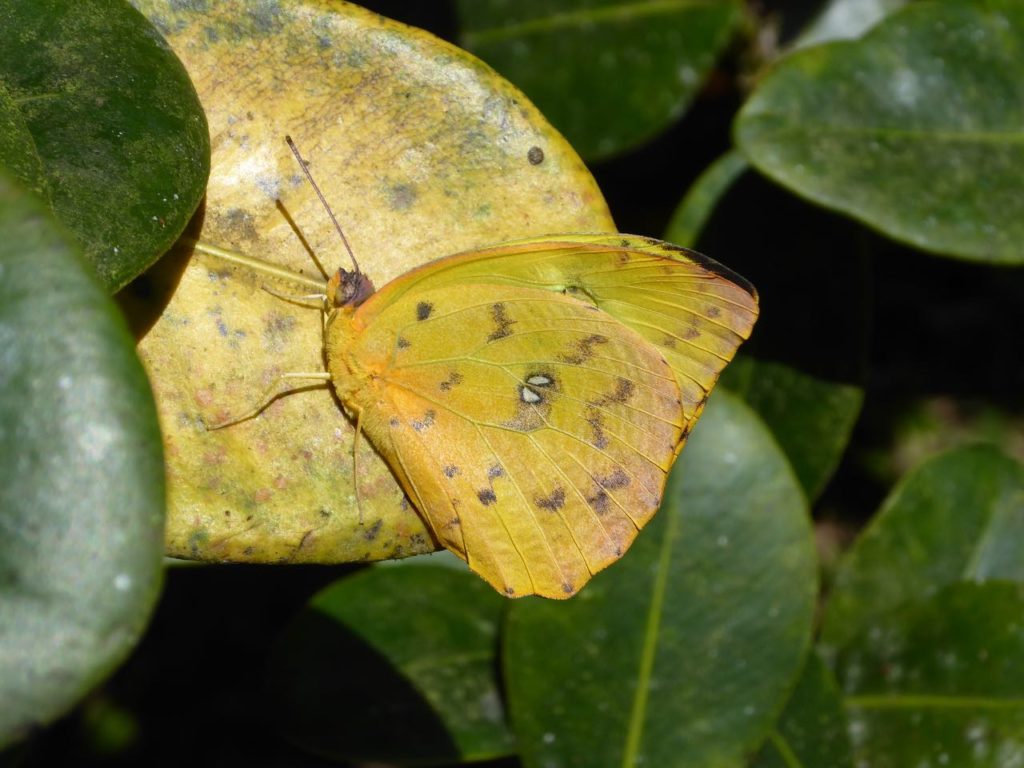
When it detected our presence, the butterfly naturally sought refuge. As far as our eyes could see, that dying leaf was the only speck of yellow. In 1/3 of a second (duration of a human blink), it spotted the sole yellow leaf, flew to it, landed, and hid in plain sight. Its evasive tactic would have succeeded spectacularly if David wasn’t so piqued.
As further proof that it was in the “hide” mode, it stayed on the leaf during my entire photo session. Because of the wind, I fiddled for 5-10 minutes trying to get a sharp close-up photo, staying within 2 ft. My heart went out to the butterfly. It fought hard and hung on valiantly during that whole time. Anyone who has ever tried to photograph butterflies can attest that this was abnormal behavior, as they are exceedingly skittish and camera shy animals. It finally flew off when we retreated at least 15 ft .
I learned recently that visual processing involves one fourth of our human brain. Relative to the rest of our body, it is an astounding proportion to support the small eyes. The butterfly brain, in comparison, is pinhead size. Keeping this in mind, let’s work out roughly what it would take to achieve the feat, in human terms, and compare score of each trait using symbols to mean equal (=), human better than butterfly (>), or less than butterfly (<) respectively.
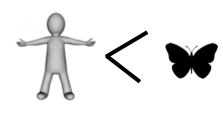
High flying speed
The incredible speed the sulphur butterflies zip around with a tail wind at our location has always fascinated me. I clocked them at 8-10 mph under similar breezy conditions. Taking into consideration the relative body sizes, this would roughly correspond to 2X the running speed of a champion athlete.
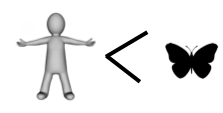
Number of eyes
As we know, we human have two eyes of one type designated as simple eye (as in single lens). Butterflies, on the other hand, have 2 simple eyes (hidden on top of the head in photo below, at the base of the antennae) and 2 large compound eyes (each with arrays of 12,000 individual tiny photoreceptors known as ommatidia). The butterfly simple eyes sense light intensity, movement, and orientation whereas the thousands of compound eyes can sense shapes but mainly colors (see below discussion on Colors). Contrary to popular belief, butterflies see only a single image, not thousands with the compound eyes. Each eye contributes a “pixel” to the whole image.
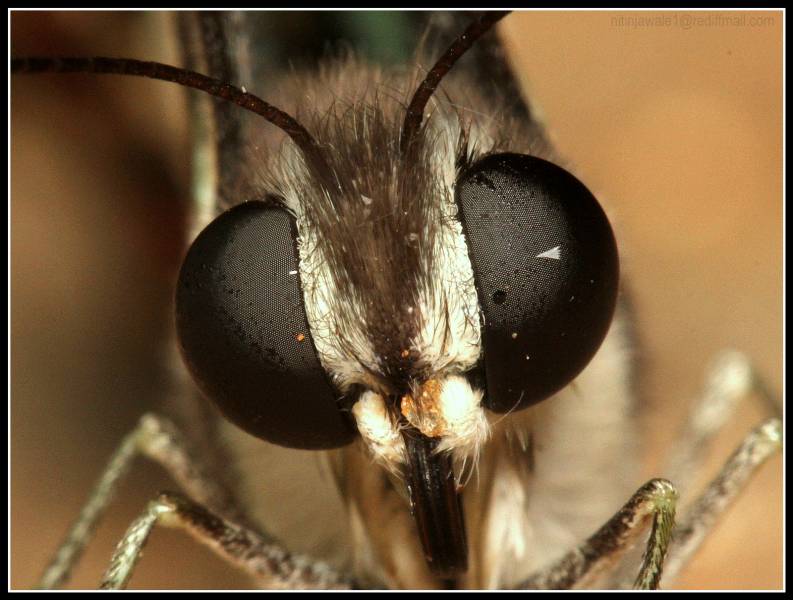
Biologically, vision refers to the process whereby the eyes convert incident light into electric signals that are eventually processed by the brain. Vision allows animals to be aware of their physical surroundings. In butterflies, it is especially dominant, more so than the olfactory or auditory senses. Vision in general and color vision in specific are critical for survival. The butterfly depends on visual cues to feed on their preferred flowers, find mate, reproduce (where to lay eggs) and to migrate.
We can now break down and compare the separate components involved in human and butterfly vision.
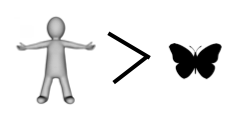
Visual distance and depth of field
The position and structure of the two human eyes allow for binocular vision with depth perception, whereas butterfly’s eyes are capable of monocular vision. In distance, man can see much further, 3 mi vs. 12 ft for butterfly. For the purpose of the discussion of our disappearing butterfly, let’s keep to a distance of 12 ft for comparison.
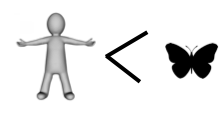
Peripheral Vision
Peripheral vision is what we can see out of the corner of our eyes. The boundaries of butterfly peripheral vision are substantially greater than man’s. Our vision is confined to the space immediately in front, shown below in the cross section of the peripheral field. We cannot see behind our shoulders or above our head. The butterfly numerous eyes can see everything from front to back except for a ~ 15º arc behind its head.
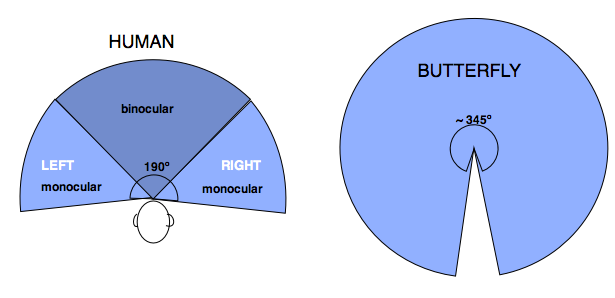
In 3-dimensional space, this difference between human and butterfly is even more pronounced. Human can see well ahead within 120º vertical arc. Butterfly can see in front, above, below, and behind except for the blind arc — amounting to 93% of the visual sphere. This was gleaned from a study of the Orange sulphur butterfly and may not be true for others species. In comparison, human can see less than 30% of the visual sphere. (The latter is my rough calculation).
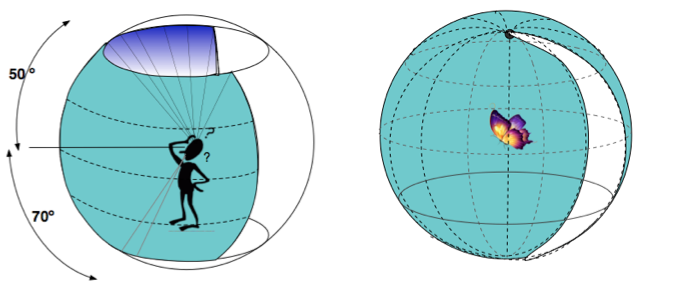
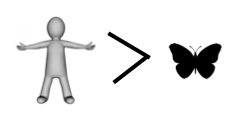
Visual Acuity
Acuity allows us to resolve small details with precision (think Snellen eye chart at the optometrist office). The next illustration shows the difference between human and butterfly. Among studied animals, human visual acuity is among the highest. Butterfly rates somewhere in the middle.
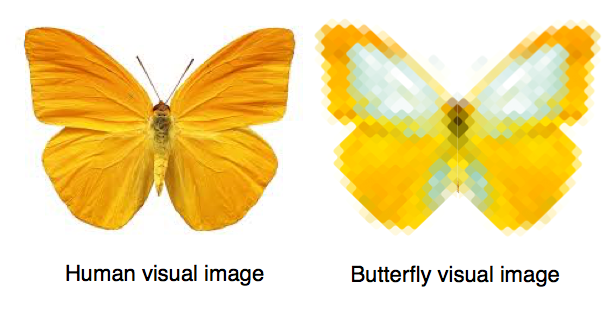
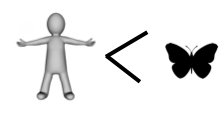
Color and Light Sensing
Extreme vision is the butterfly’s ace in the hole. What it lacks in brain cells, it makes up in the number and types of different photocells. Butterfly visual range may be the widest among animals. Their photoreceptors are vastly more numerous, and more significantly, they are more varied (chart) in types and in sensitivities to a wider spectral range. For example, eyes of the studied Japanese yellow swallowtail can detect blue, green and red (as in humans) but also violet, shorter (UV) wavelength, longer (broadband) wavelength and polarized light.
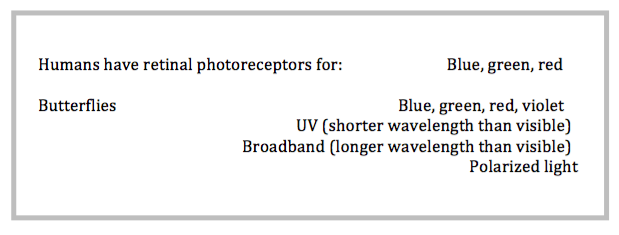
The next illustration shows the relative arrangement and distribution of the human receptors (cones) and butterfly ommatidia (packets of 13-15 bundled receptors) in comparison to the digital video camera on the left.
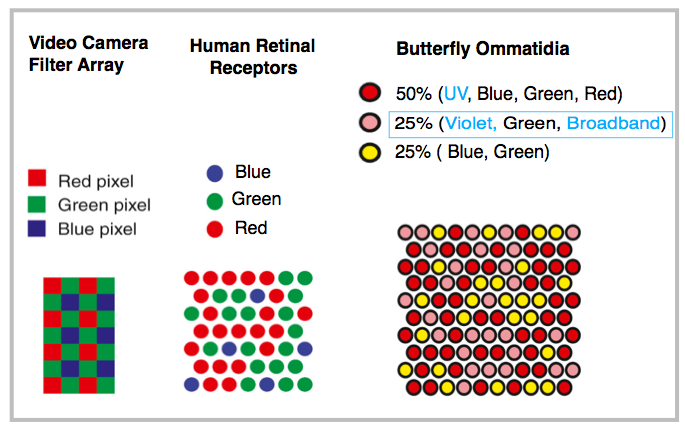
Butterfly’s more varied and more complex photoreceptors support a variety of functions. For example, UV light enhances their visual differentiation of flowers as food sources. Polarized and broadband light are important in the recognition of potential mates and in signal communication among a world of other butterflies. They also depend on the wider spectral range to search and recognize plant sources, especially for tropical butterflies in a highly biodiverse, dark and dense forest environment.
The following butterflies are photographed under visible and UV light.
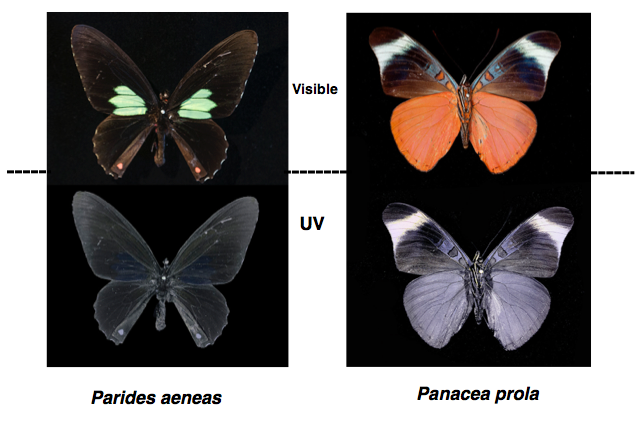
The next two sets of photos illustrate the appearance of flowers and of butterflies in visible light, UV and simulated vision to fellow butterflies. We cannot, of course, know what the butterflies “see”, but we are beginning to learn what they can detect and what they respond to.
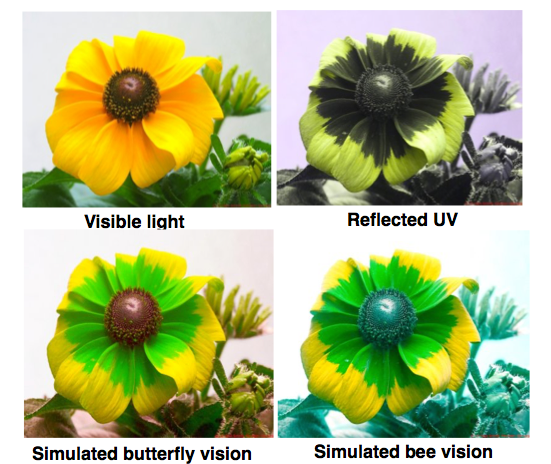
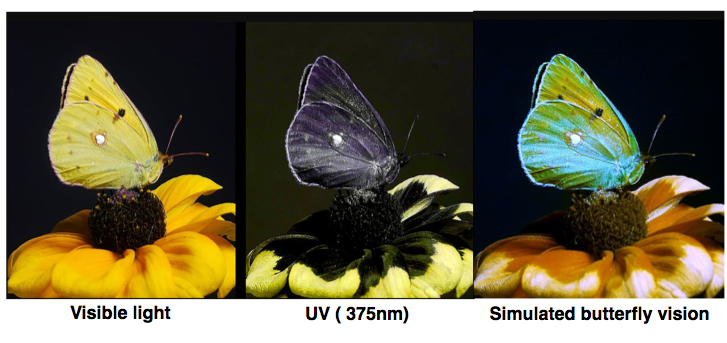
The above are just a handful of the traits that affect butterfly visual perceptions, studied on a small number of butterflies out of the 17,000 species total.
If you have kept count, the score so far is butterfly 4, human 2.
And that, dear readers, is why we missed the show.